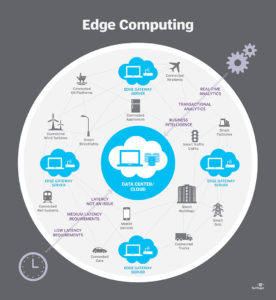As we continue our discussion on internet exchange points and peering, it’s essential to look toward the future – or simply to the present. IXPs and internet peering are part of an ongoing digital transformation affecting the way the internet operates and how it is used.
In a recent article, Equinix discusses the realities of the new digital economy, and how IXPs and internet peering are playing a role in this ever-evolving landscape. We’ll summarize those shifts below.
Previously, if a certain geographic area experienced slow or unreliable internet connections, internet service providers couldn’t – or wouldn’t – do much to improve those users’ experience. Then, providers began to make a shift, moving from a “best efforts” status quo model to one that placed a high value on high performance and availability.
In doing so, providers worked to improve service delivery and reliability by developing new (and potentially redundant) internet peering hubs in those geographic areas. These efforts have continued as the need for scalability and resilience continues to grow.
Multi-IX Strategies
Another recent internet peering trend is the development of the multi-internet exchange, or multi-IX, strategy. Essentially, this is the use of dual suppliers or vendors to help providers achieve resilient peering by:
- Protecting against operational issues or bugs that may affect only one of the dual providers;
- Insulating users from sudden changes in provider status;
- Ensuring that competition is high and pricing is robust; and
- Expanding services and improving quality of experience.
Ultimately, it is the customer who benefits from multi-IX strategies, with lower costs and increased reliability. However, it also offers protections and benefits for service providers.
Internet exchange points and peering are making the internet faster, more reliable and more secure. If you have questions about IXPs and internet peering, and how they could benefit your business, get in touch today.
Vaultas is a premier provider of IT solutions, providing data storage and backup, disaster recovery and business continuity services, hosting, colocation, cloud storage and more. Call us to better understand the value that peering and IXPs can bring to your business!


